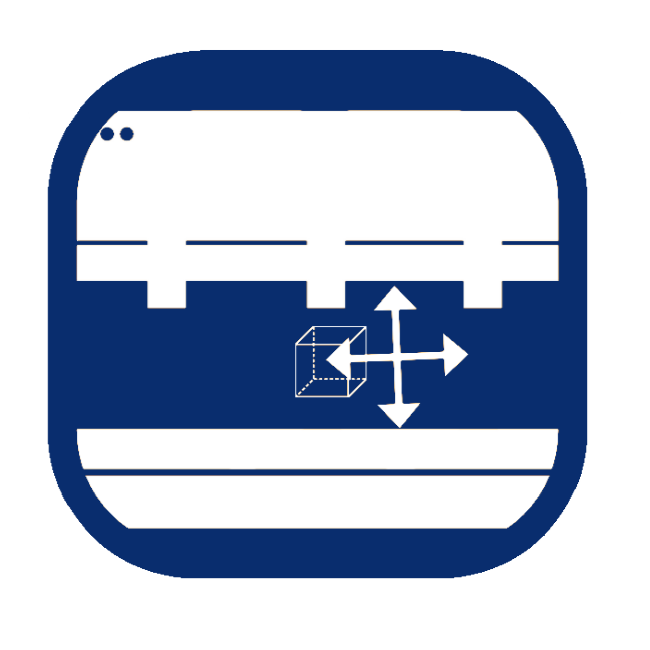What Is Fine Blanking?
Surface defects such as edge collapse, fracture, and burr are normally noticeable on the wall surface created by the traditional stamping process. Fine blanking is a specialized process that combines cold extrusion with stamping. With specialized tooling and methods, fine blanking is used to economically create smooth wall surfaces without those defects created by the stamping process. Also, the flatness of the top surface can be maintained or enhanced with compressing forces of the die and plate. In general, relatively high dimensional precision can be achieved without additional trimming operations. Because of its quality and cost-effectiveness, fine blanking is widely used to make parts in electronics, motorcycles, and automobiles.
| |
||
| Conductor | Disconnector | Base Plate |
The Difference Between Fine Blanking and Sheet Metal Stamping
|
|
The choice between fine blanking and metal stamping depends on your specific requirements. If you need high precision and smooth cutting edges and can tolerate higher costs, fine blanking may be the better choice. If you need mass production and can accept slightly rougher cutting edges, metal stamping may be more suitable. |
| Feature/Type | Fine Blanking | Conventional Stamping |
|---|---|---|
| Cutting Characteristics | Fine blanking is a high-precision cutting process that can achieve extremely smooth and vertical cutting edges without the need for further secondary processing. | A fast process that uses dies to cut metal sheets into the desired shape but may require additional process steps (such as trimming or grinding) to improve surface quality. |
| Material Thickness | Fine blanking is typically used for thinner metal sheets, usually ranging from 0.1 to 6 millimeters. | It can handle thicker metal sheets, with a broader range typically from 0.5 millimeters to 12 millimeters or thicker. |
| Cutting Edges | Fine blanking can achieve very smooth and precise cutting edges that do not require further processing, making it suitable for applications requiring high precision and quality cutting edges. | Cutting edges are generally rougher and may require additional trimming or grinding to achieve the desired surface quality. |
| Cost and Production Speed | Fine blanking typically requires longer processing times and higher costs but offers higher precision and quality. | It is usually a faster and more cost-effective process, making it suitable for mass production. |
Layana's Fine Blanking Capabilities
Layana has a core team of toolmakers, some with 40 years of experience from simple dies to progressive dies, and toolings are mostly made in-house.
|
Category |
Capability |
|---|---|
|
The Maximum Size of a Tooling |
Up to 2,500mm*1,000mm*550mm |
| The Maximum Weight of a Tooling | Up to 1,200kg |
|
Range of Material Thickness |
0.02mm~6mm |
|
Tolerance Range |
Up to ±0.01mm |
|
Productivity/Month |
10 sets of dies |
|
Range of Stamping Machine |
From 25T to 300T |
Fine Blanking Process
|
|
Fine blanking is a special form of stamping process, the cutting area has the highest requirements for smooth cutting by compressing the entire part to extract the material through the upper and lower punches. The precise fine-blanking process maintains very tight tolerances and may eliminate the need for additional post-processing. |
The Materials for Fine Blanking
The most suitable materials are high-tensile steels, such as carbon steel, alloy steel, stainless steel, aluminum alloy, brass, copper, titanium, and other materials. It can be used for punching, deep drawing, fine blanking, forming, and others.
The Pros and Cons of Fine Blanking
Fine blanking is highly beneficial for applications that demand high precision and quality cutting. However, it comes with higher costs and longer processing times. When considering the use of fine blanking, it's important to carefully weigh its advantages and disadvantages to ensure that it meets specific product requirements. Here are its main pros and cons:
Advantages
- High Precision: Fine blanking can achieve extremely accurate and consistent cuts with smooth and perpendicular cutting edges, without the need for further processing or trimming. The material thickness is between 1mm and 6mm.
- High-Quality Surface: Cutting edges are smooth and free of burrs, eliminating the need for grinding or deburring.
- High-Quality Products: It is suitable for producing high-quality parts, especially in applications that require high precision, such as automotive components and electronic devices.
- Low Material Waste: Fine blanking reduces material waste since it does not require additional trimming steps.
- Complex Shapes: It can cut complex shapes, including both internal and external contours.
Disadvantages
- High Cost: Fine blanking typically comes at a higher cost compared to other cutting methods, including the expenses related to mold design and manufacturing.
- Limited Material Range: Fine blanking is typically suitable for thinner metal sheets and may not be well-suited for extremely thick or very soft materials.
- Longer Processing Time: Due to the high precision requirements, fine blanking may require longer processing times, especially for mass production.
|
|
 |
The Applications of Fine Blanking
| |
Fine blanking is a high-precision metalworking technique that finds widespread applications in various industries, including but not limited to the following sectors:
-
Automotive Manufacturing: Fine blanking is commonly used in the automotive industry to produce components such as brake system parts, gears, bearings, and chassis components.
-
Electronics Industry: In electronics manufacturing, fine blanking is employed for creating wires, connectors, heat sinks, and other small metal components.
-
Appliances and Home Goods: Fine blanking technology is utilized in the production of household appliances and home goods, including items like blades, cookware, and hardware components.
-
Aerospace Industry: In the aerospace sector, fine blanking is used to manufacture aerospace engine parts, aircraft structures, instruments, and control system components.
-
Medical Devices: Fine blanking technology is applied in the manufacturing of various medical device components, such as surgical tools, instrument casings, and mechanical parts.
-
Construction and Building Materials: It is used to produce metal components for the construction and building materials industry, including steel structures, door and window fittings, and tableware.
-
Transportation and Transportation Equipment: This includes the transportation industry for vehicles such as trains, road transport, ships, etc., where fine blanking is used for producing vehicle parts and equipment components.
-
Energy and Heavy Industry: It plays a role in the energy sector and heavy industry, manufacturing equipment and machinery components, and engineering parts.
-
Telecommunications and Communication: Fine blanking is applied in the production of communication equipment and telecommunication station parts.




